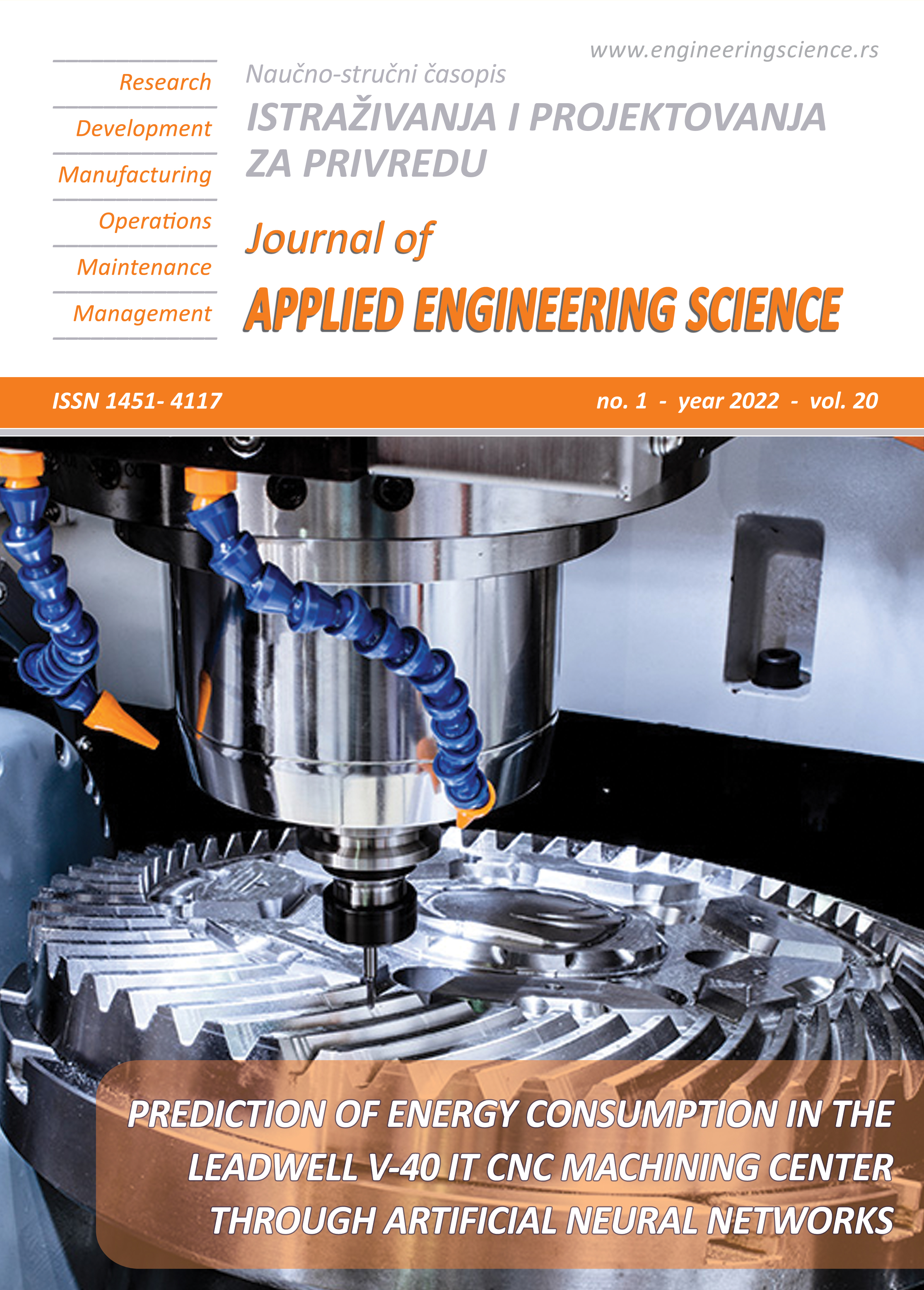FINITE ELEMENT ANALYSIS OF PUNCHING SHEAR-UNBALANCED MOMENT INTERACTIONS AT EDGE COLUMN-FLAT PLATE CONNECTIONS
Abstract
The unbalance moments at the edge connections of flat plate structures induced by lateral forces (i.e. an earthquake) may not always act in parallel directions of the building axes. Most research studied the unbalanced moments in one direction, a few of them in biaxial directions, and none of them in incline directions. This paper presents the results of a nonlinear finite element analysis on punching shear capacity at edge column-slab connections subjected to three directions of the unbalanced moments namely perpendicular, incline 45°, and parallel to the slab free edge in combination with the shear force. A 3-D numerical analysis of ten isolated edge column-plate connections was conducted by applying an appropriate element size, mesh, and calibrated material parameters of the concrete damage plasticity (CDP) model in ABAQUS. the connections were subjected to ten variations of the moment to shear (M/V) ratios. The results show that the punching shear capacity decreases exponentially for the unbalanced moment acting perpendicular and parallel to the slab free edge, and linearly for unbalanced moment incline 45° as the increase in M/V ratio. The M-V interaction at the edge connections depends on the unbalanced moment directions which are slightly different from the ACI 318 code.
References
2. Moehle JP (1988) Strength of Slab-Column Edge Connections. ACI Structural Journal 85:89–98
3. Tian Y, Jirsa JO, Bayrak O, et al (2008) Behavior of Slab-Column Connections of Existing Flate-Plate Structures. ACI Structural Journal 105:561 – 569
4. Matzke EM, Lequesne RD, Parra-montesinos GJ, Shield CK (2015) Behavior of Biaxially Loaded Slab-Column Connections with Shear Studs. ACI Structural Journal 112:335–346. https://doi.org/10.14359/51687408
5. Genikomsou AS, Polak MA (2015) Finite element analysis of punching shear of concrete slabs using damaged plasticity model in ABAQUS. Engineering Structures 98:38–48. https://doi.org/10.1016/j.engstruct.2015.04.016
6. Feng DC, Wu G, Lu Y (2018) Finite Element Modelling Approach for Precast Reinforced Concrete Beam-to-Column Connections Under Cyclic Loading. Engineering Structures 174:49–66. https://doi.org/10.1016/j.engstruct.2018.07.055
7. Boonpichetvong M, Pannachet T, Pinitkarnwatkul S (2016) Finite element modeling of concrete specimens confined with metal sheet strips. International Journal of Technology 7:1132–1140. https://doi.org/10.14716/ijtech.v7i7.4875
8. Badan Standarisasi Nasional (2013) SNI 2847:2013 Persyaratan Beton Struktural untuk Bangunan Gedung. Jakarta
9. Badan Standardisasi Nasional (2012) SNI-1726:2012 Tata cara perencanaan ketahanan gempa untuk struktur bangunan gedung dan non gedung. Jakarta
10. Wiryadi IGG (2017) Analisis elemen hingga perilaku hubungan pelat-kolom beton bertulang akibat gaya geser dan momen tak imbang dua arah. Udayana University
11. Hognestad E (1951) A Study of Combined Bending and Axial Load in Reinforced Concrete Members. University of Illinois Bulletin Series 399:49. https://doi.org/10.14359/7785
12. Lubliner J, Oliver J, Oller S, Oñate E (1989) A plastic-damage model for concrete. International Journal of Solids and Structures. https://doi.org/10.1016/0020-7683(89)90050-4
13. Lee J, Fenves GL (1998) Plastic-damage model for cyclic loading of concrete stuctures. Journal of Engineering Mechanics 124:892–900
14. Tambusay A, Suprobo P, Faimun, Amiruddin AA (2016) Analyses Behavior of Slab-Column Connections Using ECC Material Based. EASEC 14.: https://doi.org/10.13140/RG.2.1.1517.7367
15. Wosatko A, Genikomsou A, Pamin J, et al (2018) Examination of two regularized damage-plasticity models for concrete with regard to crack closing. Engineering Fracture Mechanics. https://doi.org/10.1016/j.engfracmech.2018.03.002
16. El-salakawy EF, Polak MA, Soliman MH (1998) Slab-column edge connections subjected to high moments. Can J Civ Eng 25:526–538
17. Sudarsana IK, Gegiranang Wiryadi IG, Adi Susila IG (2017) Analisis Perilaku Hubungan Pelat-Kolom Tepi Struktur Pelat Datar menggunakan Concrete Damage Plasticity (CDP) dalam Abaqus. Jurnal Spektran 5:
18. Viswanathan TS, Mohan GG, Santhi AS (2012) Shear stress distribution of flat-plate using Finite Element Analysis. International Journal of Civil and Structural Engineering 2.: https://doi.org/10.6088/ijcser.00202030019
19. CEB-FIP MC (1990) Model Code for Concrete Structures. Comite Euro-Internatinal du Beton et Federation International de la Precontrainte, Lausanne, Switzerland
20. Gardner NJ, Shao XY (1996) Puncing Shear of Continuous Flat Reinforced Concrete Slabs. ACI Structural Journal 93:218 – 228
21. Sudarsana IK (2001) Punching Shear in Edge and Corner Column Slab Connections of Flat Plate Structures. Univercity of Ottawa
22. Sherif AG, Dilger WH (1966) Critical Review of the CSA A23.3-94 Punching Shear Strength Provision for Interior Columns. Canadian Journal for Civil Engineering 23:998–1011

